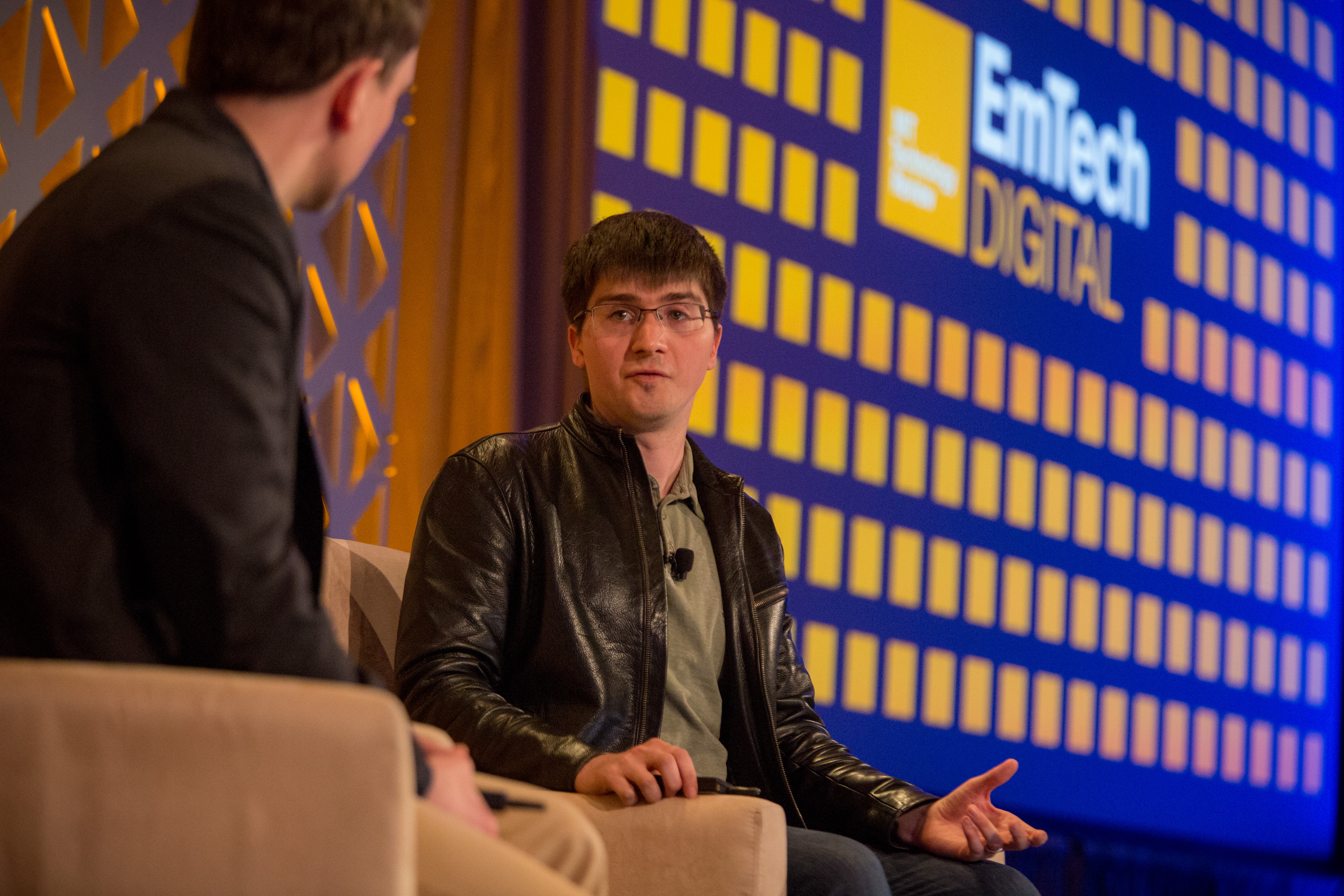To protect artificial intelligence from attacks, show it fake data

AI systems can sometimes be tricked into seeing something that’s not actually there, as when Google’s software “saw” a 3-D-printed turtle as a rifle. A way to stop these potential attacks is crucial before the technology can be widely deployed in safety-critical systems like the computer vision software behind self-driving cars.
At MIT Technology Review’s annual EmTech Digital conference in San Francisco this week, Google Brain researcher Ian Goodfellow explained how researchers can protect their systems.
Goodfellow is best known as the creator of generative adversarial networks (GANs), a type of artificial intelligence that makes use of two networks trained on the same data. One of the networks, called the generator, creates synthetic data, usually images, while the other network, called the discriminator, uses the same data set to determine whether the input is real. Goodfellow went through nearly a dozen examples of how different researchers have used GANs in their work, but he focused on his current main research interest, defending machine-learning systems from being fooled in the first place. He says for earlier technologies, like operating systems, defense of the technology was added afterwards, a mistake he doesn’t want made with machine learning.
“I want it to be as secure as possible before we rely on it too much,” he says.
GANs are very good at creating realistic adversarial examples, which end up being a very good way to train AI systems to develop a robust defense. If systems are trained on adversarial examples that they have to spot, they get better at recognizing adversarial attacks. The better those adversarial examples, the stronger the defense.
Goodfellow says these concerns are still theoretical and that he hasn’t heard of adversarial examples being used to attack computer vision systems, but bots or spammers are trying to use similar methods to look like more legitimate traffic and accomplish their goals.
Luckily, Goodfellow says, there is still time to prepare our systems to defend themselves from AI-enabled attacks.
“So far, machine learning isn’t good enough to be used in attacks," he says.
Deep Dive
Artificial intelligence
Large language models can do jaw-dropping things. But nobody knows exactly why.
And that's a problem. Figuring it out is one of the biggest scientific puzzles of our time and a crucial step towards controlling more powerful future models.
Google DeepMind’s new generative model makes Super Mario–like games from scratch
Genie learns how to control games by watching hours and hours of video. It could help train next-gen robots too.
What’s next for generative video
OpenAI's Sora has raised the bar for AI moviemaking. Here are four things to bear in mind as we wrap our heads around what's coming.
Stay connected
Get the latest updates from
MIT Technology Review
Discover special offers, top stories, upcoming events, and more.